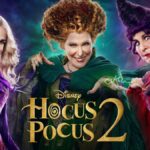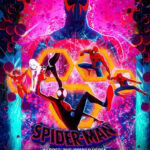The tradition of using lights to celebrate Christmas dates back to the 16th century. At that time, people would use candles to decorate their Christmas trees. However, the use of candles posed a significant fire hazard, and it was not until the late 19th century that electric lights were introduced as a safer alternative.
The first electric Christmas lights were invented by Thomas Edison’s assistant, Edward H. Johnson, in 1882. He hand-wired 80 red, white, and blue light bulbs and strung them together to create a string of lights that he displayed on his Christmas tree.
Despite the invention of electric lights, it was not until the early 20th century that Christmas lights became popular in the United States. In 1917, the city of San Diego, California, became the first city in the world to use electric Christmas lights to illuminate its main street. The following year, the use of Christmas lights spread to other cities in the United States.
By the 1920s, Christmas lights had become a popular tradition in the United States and Europe, and manufacturers began producing them in large quantities. In the 1960s, the invention of miniature lights made it possible to create more intricate designs and allowed for greater creativity in Christmas light displays.
Today, Christmas lights are a important part of the holiday season, and many cities around the world hold annual Christmas light displays that attract thousands of visitors. The technology behind Christmas lights has continued to evolve, with the advent of LED lights, which are more energy-efficient and longer-lasting than traditional incandescent lights.
C9 CHRISTMAS LIGHT BULB
The C9 Christmas light is a specific type of bulb used in holiday lighting displays. It is a larger, more traditional bulb that is often used for outdoor decorations, such as rooflines and trees.
The C9 bulb was first introduced in the 1920s as a larger version of the C7 bulb, which had been introduced a few years earlier. The C9 bulb was designed to be brighter and more durable than the C7, making it a popular choice for outdoor holiday lighting displays.
It is difficult to pinpoint the exact year when the first C9 Christmas light was used, as there were likely many manufacturers producing this type of bulb in the 1920s and 1930s. However, it is clear that the C9 bulb became increasingly popular in the decades following its introduction, and it remains a popular choice for holiday lighting displays today.
LED CHRISTMAS LIGHTS
The first LED Christmas lights were introduced in the early 2000s, although the technology behind LED lighting had been in development for several decades prior to that.
In 1962, Nick Holonyak, Jr., a researcher at General Electric, invented the first practical LED, which emitted a red light. Over the years, scientists and engineers continued to improve LED technology, and by the 1990s, LEDs were being used in a variety of applications, including traffic lights and electronic displays.
It was not until the early 2000s, however, that LED Christmas lights began to gain popularity as a holiday lighting option. The first LED Christmas lights were initially more expensive than traditional incandescent Christmas lights, but they offered a number of advantages, including greater energy efficiency, longer lifetimes, and the ability to produce a wider range of colors.
Today, LED Christmas lights are a popular choice for holiday lighting displays, and they are widely available in a variety of colors and styles. They are also more affordable than they were in the early days of their introduction, making them an accessible option for many people.
DANCING CHRISTMAS LIGHTS
The concept of dancing Christmas lights refers to a lighting display that is synchronized with music, creating a choreographed display of lights that appears to “dance” in time with the music. This type of display is made possible through the use of specialized hardware and software that can control the timing and intensity of individual light bulbs.
The first synchronized Christmas light display was created in 2005 by Carson Williams, an electrical engineer from Ohio, USA. Williams used 16,000 Christmas lights and a custom-built control system to synchronize his lights to the song “Wizards in Winter” by the Trans-Siberian Orchestra.
The display quickly gained popularity after a video of it was posted online, and it inspired a new trend of synchronized Christmas light displays. Today, many people create their own synchronized Christmas light displays using commercially available hardware and software, or by using DIY methods.
While the term “dancing Christmas lights” has become a popular way to describe synchronized Christmas light displays, it is worth noting that the lights themselves do not actually move or dance. Rather, it is the carefully choreographed sequencing of the lights that creates the illusion of movement and dance.






